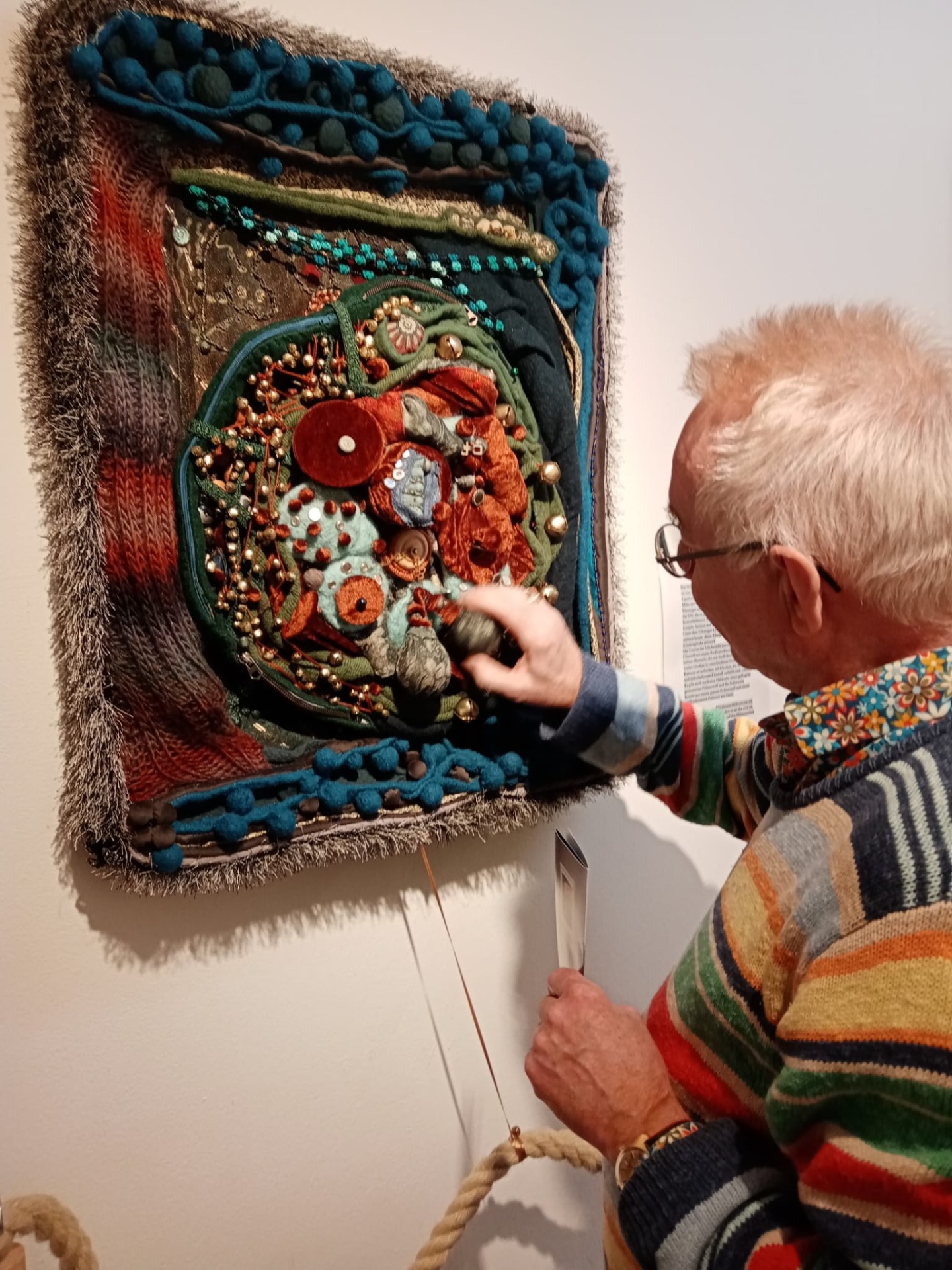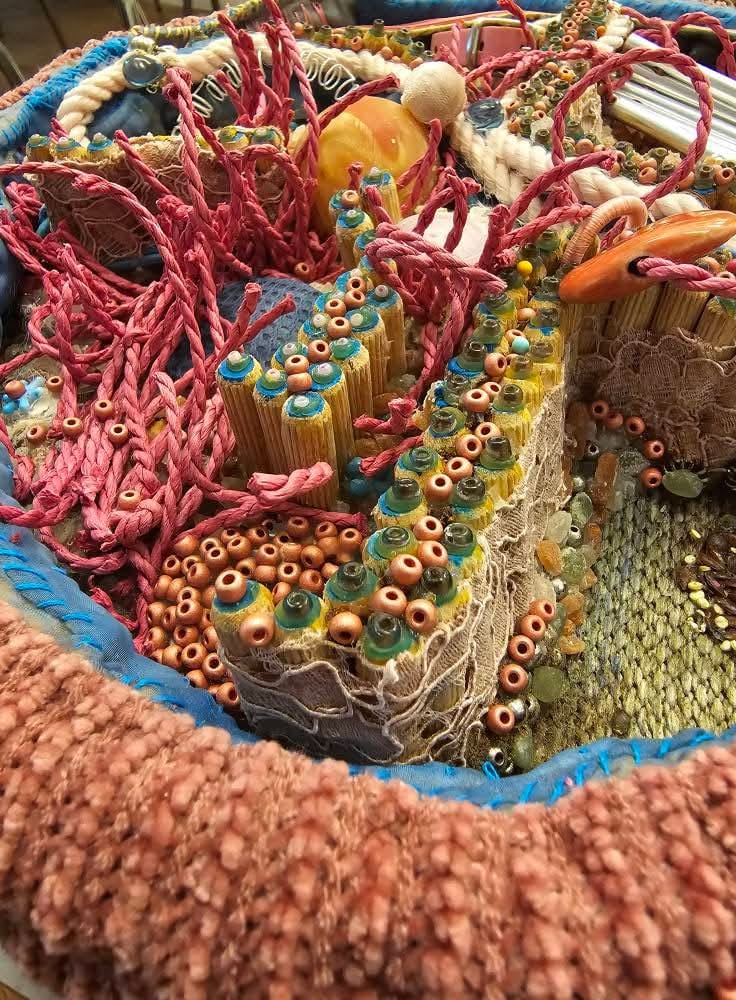
Orsolya`s tactile paintings
I want to raise people's awareness.
It's quite simple:
I take some of my artworks with me and exhibit them.
While showing them, I don't just explain how I created them.
I also talk about my purpose:
I want to create art that everyone can experience — accessible art for all people.
Accessible Exhibitions
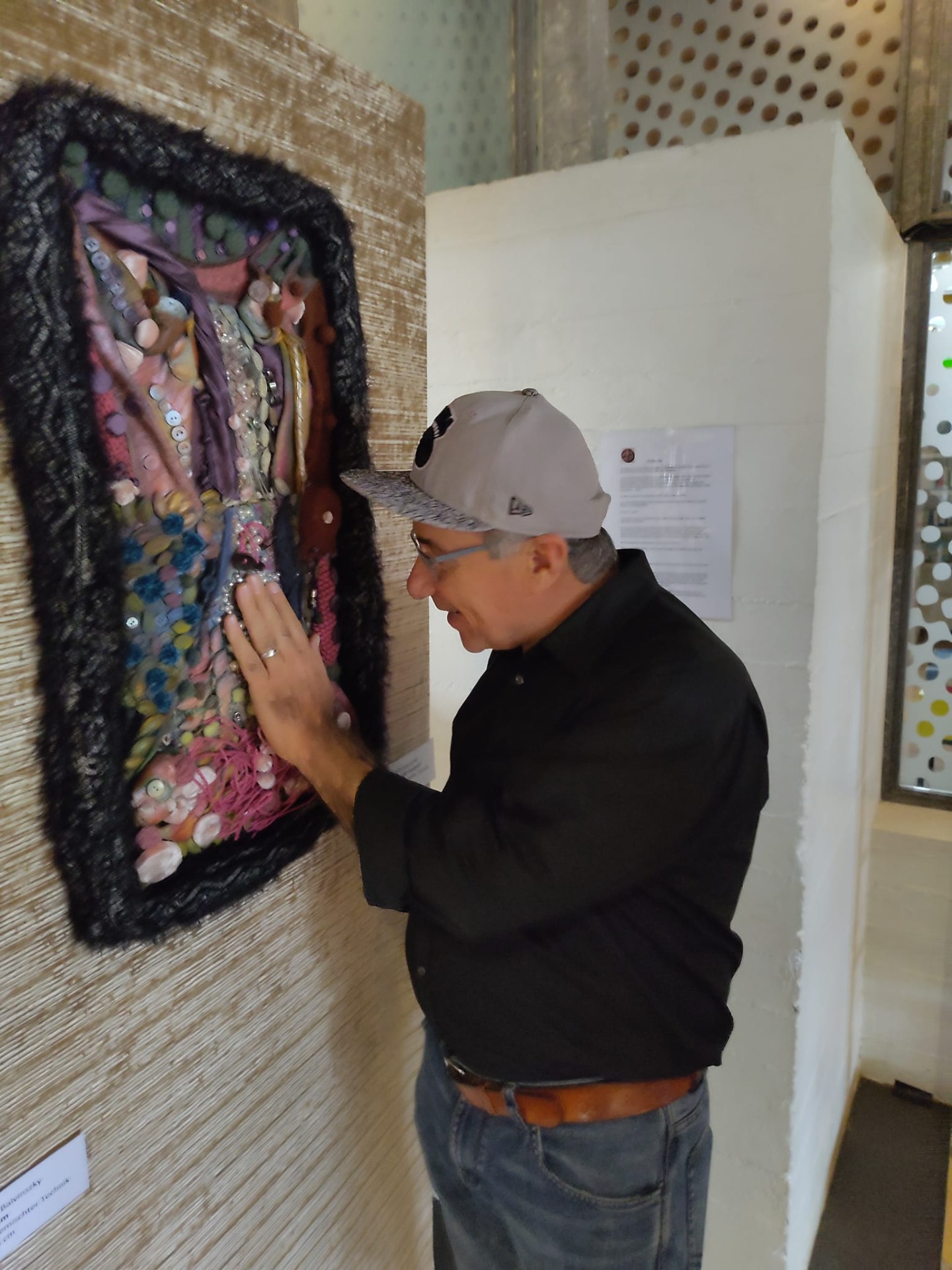
The photo shows a man engaging with a tactile artwork at an exhibition in Zürich. He is wearing a black shirt and jeans, along with a grey baseball cap worn backwards. With his right hand, he is carefully touching a framed artwork hanging on the wall. This piece has a wide, black, fur-like border and a colorful, multi-layered surface that appears to be made of various fabrics, yarns, sequins, and other materials. The artwork is titled "Wo ist der Kuckuck?" (Where is the Cuckoo?) and was exhibited at the Ararat Art Festival on September 28, 2025, at GZ Heuried in Zurich. The background features a textured wall, and in the corner, part of a window with round, colored decorations is visible.
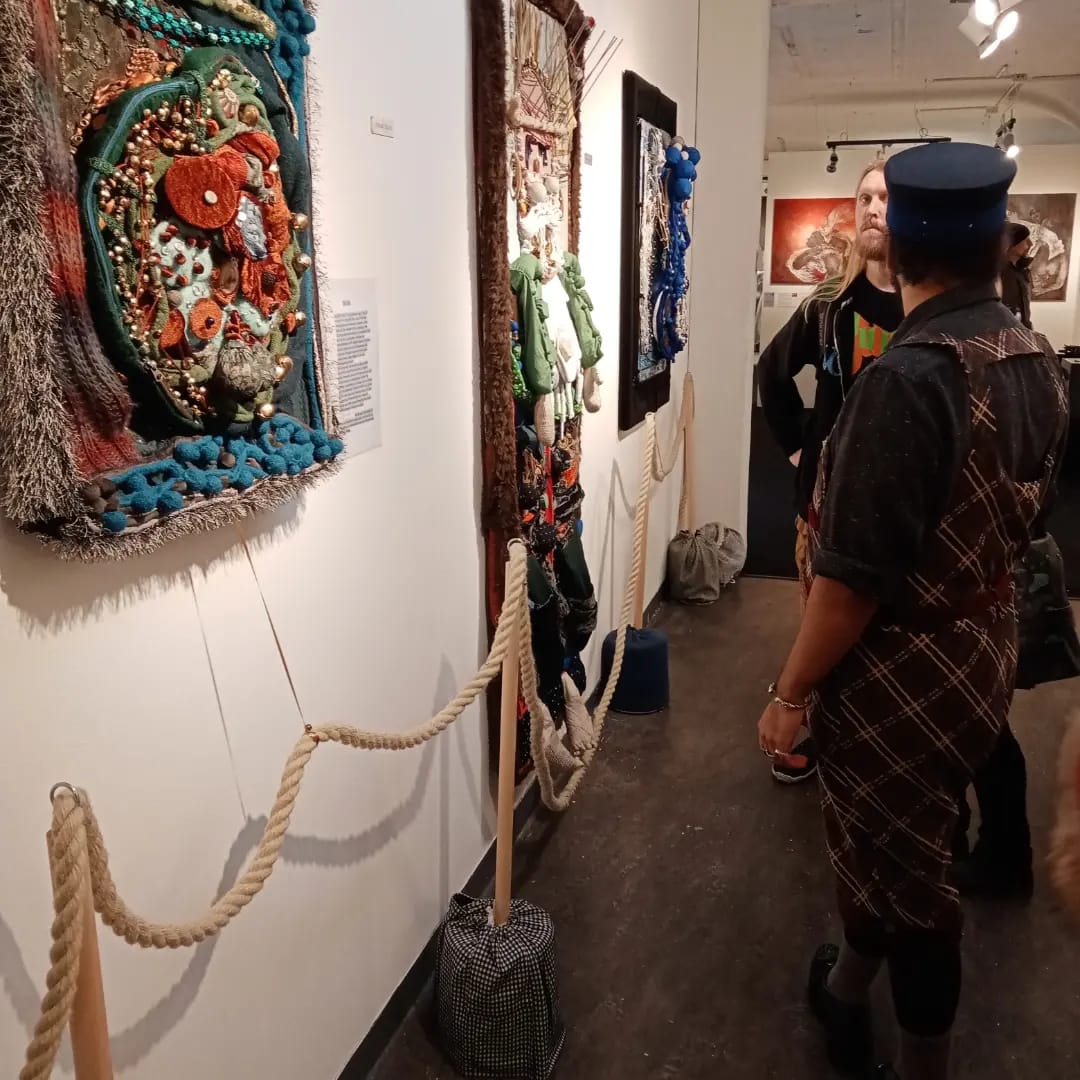
The photo shows a scene from an exhibition at the Photobastei in Zurich, presenting tactile artworks that are accessible to blind and visually impaired people.
Along a white wall, several artworks are displayed, made from different materials and textures.
In the foreground, a rope barrier is visible. It helps visitors with visual impairments move along the exhibits without touching or damaging the artworks.
Two men are visible in the photo:
-
One man is wearing a dark hoodie and has long hair. He stands with his hands on his hips and is talking to the other man.
-
The second man has his back to the camera. He is wearing a dark, checkered top over overalls, a dark hat, and a bracelet on his wrist.
The exhibition by Orsolya Balvinszky at the Photobastei took place from January 9 to 19, 2025.
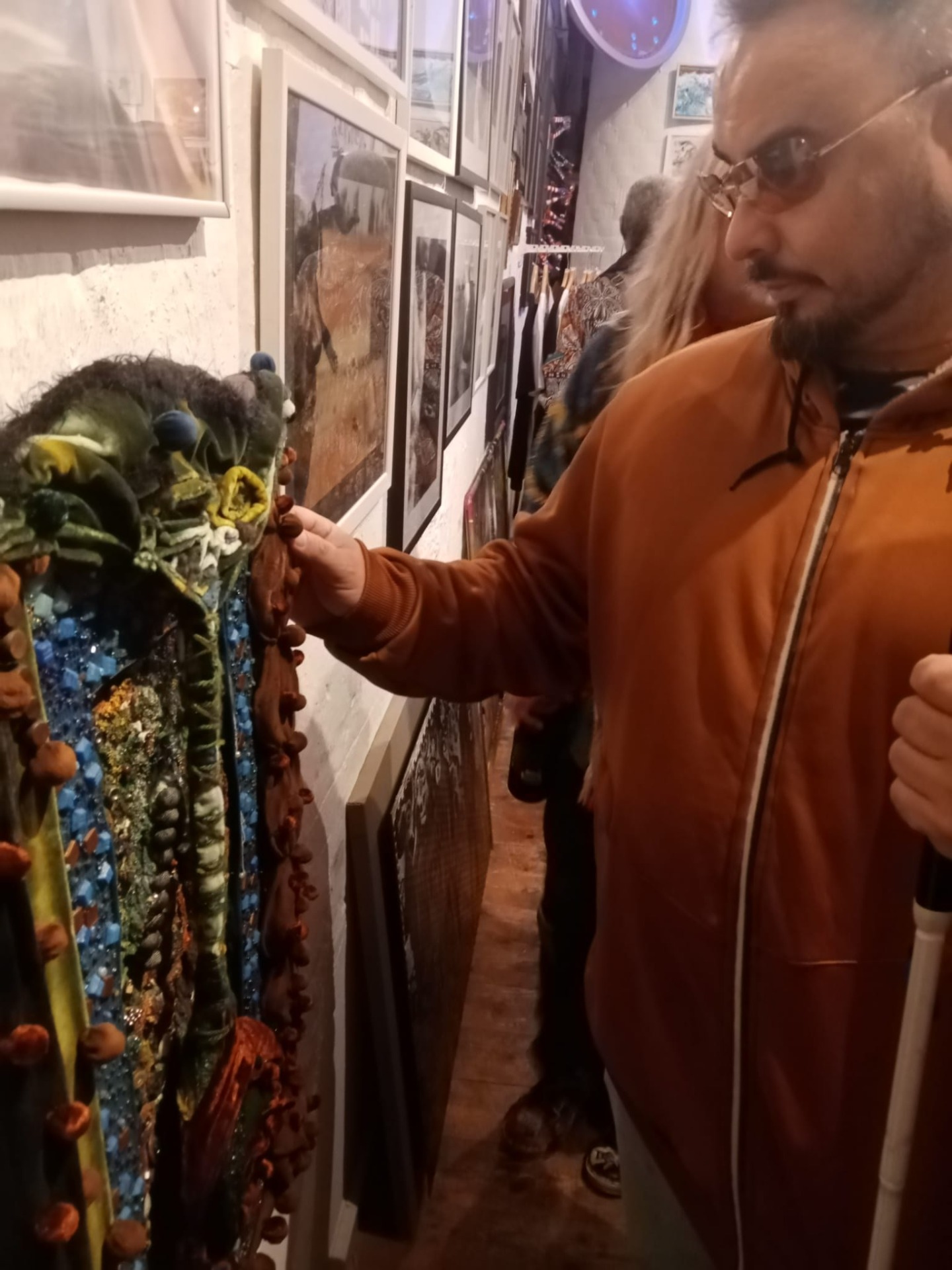
Das Foto zeigt eine Nahaufnahme eines blinden Mannes, der in einer Kunstgalerie ein taktiles Kunstwerk an einer Wand berührt. Er trägt eine braune Jacke oder einen braunen Pullover und eine Brille. Seine Hand ist auf dem Kunstwerk platziert, das aus verschiedenen Materialien wie Garnen, Perlen und Stoffen gefertigt ist und eine grüne, gelbe und blaue Farbpalette aufweist. Das Kunstwerk heisst: "Asanas". Der Hintergrund ist mit weiteren gerahmten Kunstwerken und Fotografien gefüllt, die eng nebeneinander an den Wänden hängen. Die Szene spielt sich in der Galeria 16b in Zürich ab, die bekannt dafür ist, Werke von mehreren Künstlern in Gruppenausstellungen wie der "Kunstrausch" zu zeigen.

The artwork is titled "Die Zeit" (Time).
It is a square tactile painting in a blue frame.
It depicts a clock and is decorated with different materials in red, green, and brown tones.
In front of the man, there is a barrier made of a white rope.
The rope allows blind people to explore the exhibition independently.
In the background, a white wall is visible, with a dark area on the left.
The photo was taken at the Swiss Handicap Fair in Luzern.
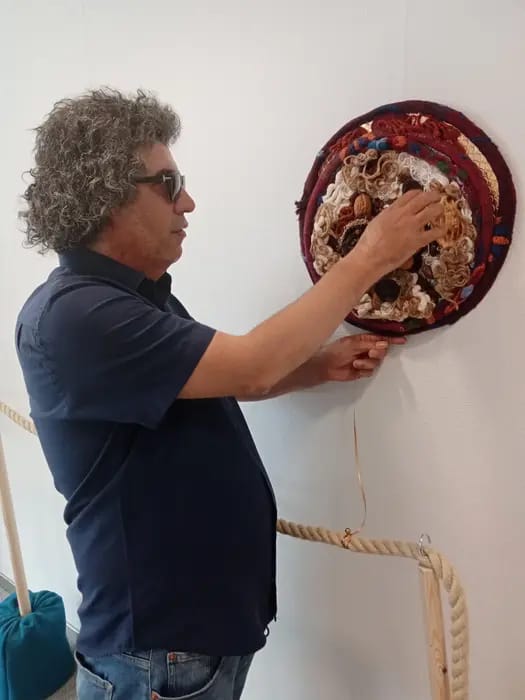
The photo shows a man with curly, gray-flecked hair and sunglasses. He is wearing a dark blue short-sleeved shirt and jeans, and is standing next to a round piece of wall art that he is touching with both hands. The artwork is made of various yarns, wool, and other materials in shades of red, brown, and beige. A rope barrier runs in front of him, marking a distance from the artwork. A broom or similar object is visible in the background. The photo was taken at the Cuba Now Gallery in Zürich.
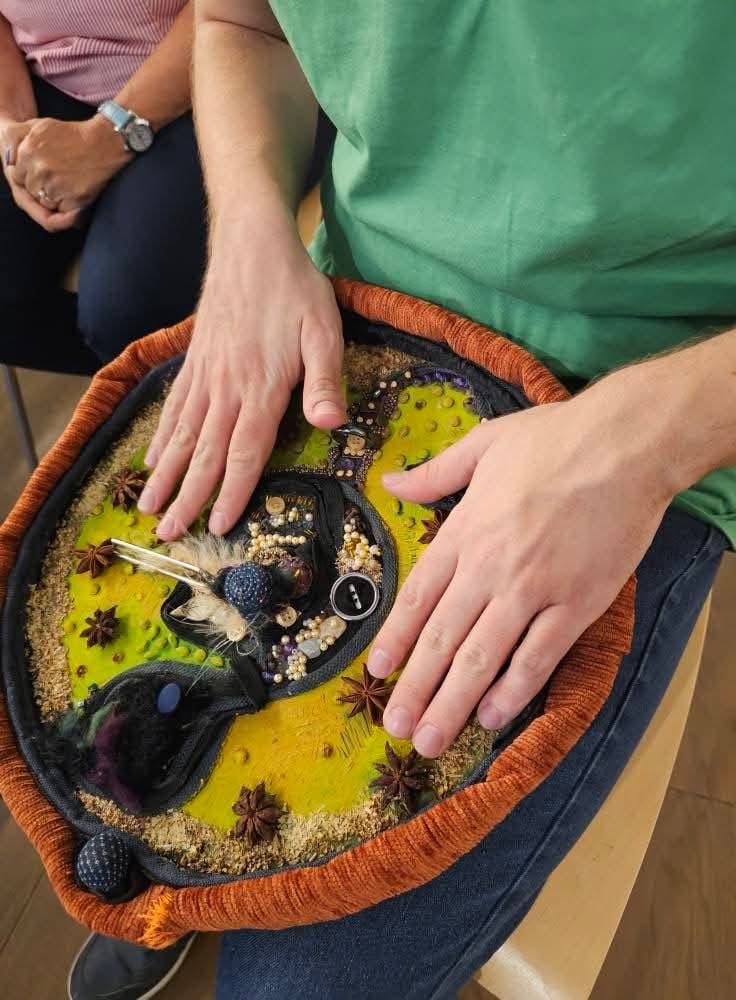
Budapest: Mental Well-Being – Luxury or Necessity?
Artistic and Creative Activities Using Both Hands
-
Conference -
Snapshots from today's conference. The photo shows a close-up of a person's hands touching a tactile artwork. The person is wearing a green T-shirt and jeans. Their hands are resting on a round, flat art object that has a yellow surface in the center and a frame wrapped in orange yarn at the edge. The artwork is decorated with various materials, including beads, star anise, feathers, and a central black button. A person in the background is wearing a pink top and a wristwatch, seemingly also waiting.
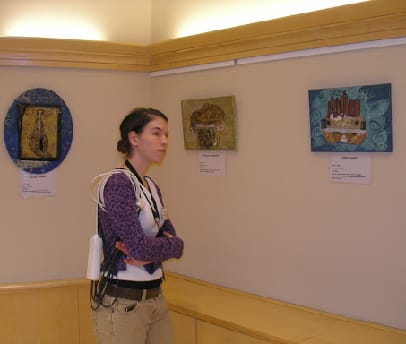
February 2010 at the Central Building of the Metropolitan Szabó Ervin Library (FSZEK) in Budapest.
The exhibition was titled "Álomvilág" (Dreamworld).
A woman is standing in an exhibition room.
On the walls, there are three artworks, each highlighted by special lighting.
They are tactile paintings created by the artist Orsolya Balvinszky.
These artworks were exhibited in February 2010 at the Main Building of the Metropolitan Ervin Szabó Library in Budapest.
The tactile art is made to be both seen and touched, so that people with and without visual impairments can experience art together.
The woman in the photo has dark hair.
She is wearing a purple-patterned sweater and light-colored trousers.
Her arms are crossed, and she is looking away from the artworks, in another direction.
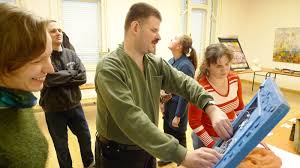
Exhibition in Szeged. A man with a mustache, wearing a green shirt, is in the foreground. He is holding a blue, rectangular object and appears to be showing it to a group of people standing around him. The group includes several individuals, with two women in the foreground: one in a green sweater, smiling at him, and another wearing a red and white striped sweater. More people are visible in the background.
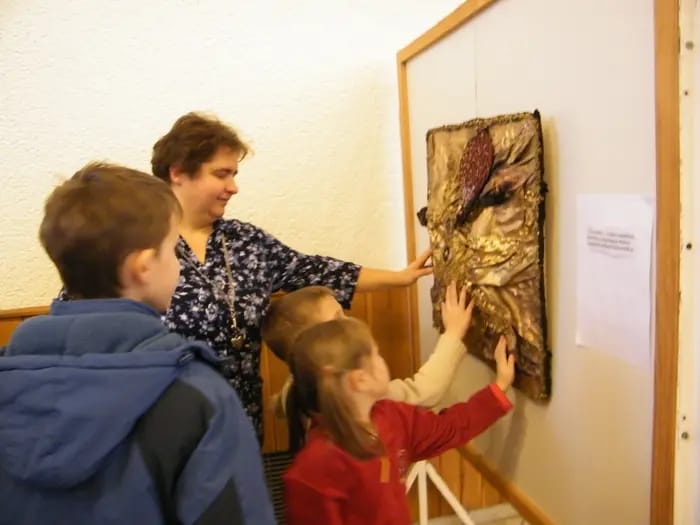
The image shows a woman and three children standing in front of a piece of art hanging on a wall. The woman has brown hair and is wearing a dark blue patterned top. She stands in the center, smiling, as she guides one of the children's hands toward the artwork. The three children are seen from behind. One is wearing a blue jacket, and another is wearing a red sweater. They are all reaching out to touch the tactile, gold, and brown artwork, which is mounted on a white panel inside a wooden frame. The setting appears to be an exhibition space or a library.
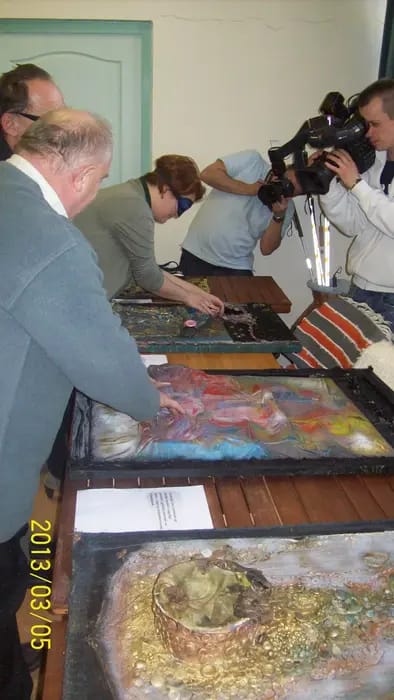
Exhibition in Miskolc in Hungary. The photo shows a group of people gathered in an exhibition space. In the foreground, several tactile artworks are visible on tables, which the attendees are touching. Two men are seen from the side; one is wearing a light blue sweater and is reaching out to touch one of the artworks, while the other is in the foreground with his back to the camera. In the background, a woman in a dark top and a film crew, consisting of a cameraman and a man with a microphone, can be seen recording the scene. The attendees are actively interacting with the exhibits by exploring them with their hands. The date "2013/03/05" is visible in the bottom left corner of the image.
